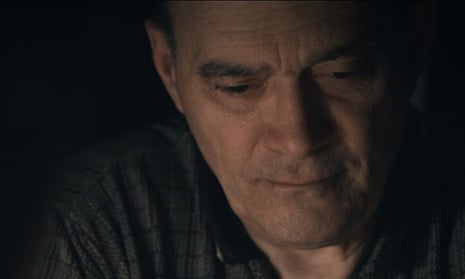Despite the controversy over Edward Snowden’s revelations of US surveillance of its citizens, it’s easy to imagine the country’s security services privately not being that embarrassed: there might be professional pride in overzealous snooping.
But such bodies’ role in 9/11 is another matter entirely. What if it could be shown that the NSA could have – should have – prevented the attacks on the World Trade Center; that its failure to do so wasn’t due to bad luck, but a lethal cocktail of incompetence, arrogance and greed; and that they then sought to cover up their mistakes?
This possibility is the driver of a fascinating, conspiracy theorising documentary: Friedrich Moser’s A Good American, which premieres on Tuesday at the CPH:DOX film festival in Copenhagen. It may not have the contemporaneous frisson of Laura Poitras’s Oscar-winning Citizenfour, but it certainly packs a punch.
The American of the title is William Binney, Bill to his friends, a crypto-mathematician and former NSA analyst, who devised a surveillance and analysis system that was cut-price, had built-in privacy protections, was up-and-running in 2000, and so dazzlingly effective that he claims it “absolutely would have prevented 9/11”, if only the agency hadn’t wilfully ignored it. The documentary doesn’t categorically prove the case – ironically for a film about data, we need to see some, or have more collaborations than are offered. Yet it does make us believe.
Binney is familiar as a high-profile NSA whistleblower who, like Snowden, has spoken out against the agency’s mass surveillance and abuses of privacy, which is what prompted his resignation in October 2001. But it’s no coincidence that he left so soon after 9/11, and the film focuses on his achievements and frustrations in the years up to and immediately after the terrorist attack.
It starts with a devastating hook. Like many people, Binney reflects on the images that most affected him at the time: people jumping out of the World Trade Center. “It was just revolting,” he says, pausing for a long time before adding, “and disgusting that we allowed it to happen.” His language has that slightly indecorous but apt choice of words one might associate with a brilliant scientist who doesn’t beat about the bush; the eyes suggest the weary resignation of a man who’s been through the wars.
What follows is a slow-burn narrative, which moves back and forth between Binney’s early, formative work as an army analyst in the 1960s, the first attack on the World Trade Center in 1993, and his development thereafter of the potentially game-changing computer system, ThinThread. Moser mixes straight-to-camera interviews with well-chosen newsreel and archive film, overlaid by a foreboding soundtrack. Marred only by too many screen-filler shots of his protagonists wandering around the countryside, the approach evokes the work of Errol Morris, not least The Fog of War, which also dealt with the misuse of power by those charged with America’s defences.
It was during the cold war, when attempting to gauge Soviet military movements, that Binney discovered the virtue of trying to interpret the patterns between data, even when encrypted, concerned not with content but who was talking to whom, how often and when. Thus he became the metadata analyst par excellence, who came up with his own five “indicators” of aggression and later predicted the Soviet invasions of Czechoslovakia and Afghanistan.
After 1993, he realised that the new cold war was caught up in the digital age and that terrorists were “burying themselves in that ballooning communications network worldwide”. By that time he was a senior staffer at the NSA; while the rest of the agency was buried in analogue, he set to work on ThinThread.
Moser’s other talking heads are Binney’s ThinThread colleagues J Kirk Wiebe and Ed Loomis, a sympathetic NSA software engineer Tom Drake, and Diane Roark, who was the senior staffer at the House Intelligence Committee, responsible for overseeing the NSA. Between them, they paint an all too familiar bureaucratic story: the small team of dedicated experts quietly creating something of enormous significance, while brasher, less talented and more self-interested superiors barely notice.
Moreover, as Binney and his team perfected ThinThread, the then NSA director General Michael Hayden commissioned Trailblazer to be the agency’s signature surveillance system, farming billions of dollars of work to the private sector and pushing ThinThread to the sidelines. Trailblazer would later be scrapped as an unmitigated failure, but not before tragedy struck in New York. Drake tells us what could have been discovered and deduced in the NSA’s databases, if only ThinThread had been directed towards it. To rub salt into the wounds, the agency then took Binney’s work, removed the privacy protections, and used it to spy on American citizens.
While some of the film’s content has been aired before, the inside experience has not been voiced in such a collective manner, with Moser joining the dots just as Binney might connect his metadata. The misdemeanours and acts of folly pile up miserably; the villains of the piece – Hayden and his NSA stooges – decline to participate.
As expert witnesses go, there is something of Alan Turing about Binney: gifted, visionary, focused and determined, not good at suffering fools (though on this evidence, personable), confident in his work but without the political nous to see off the vipers around him. “I didn’t understand why a lot of people couldn’t see what I could see,” he says of his early revelations of the use of metadata. By 9/11, such intellectual puzzlement had turned to moral outrage.
Binney is also featured in Citizenfour. One wonders why his own story took this long to get an airing; a telling exchange with his whistleblower attorney early in the film, and a sequence reminiscent of House of Cards, suggest an answer. All these years later, it still feels like a brave undertaking.

Comments (…)
Sign in or create your Guardian account to join the discussion